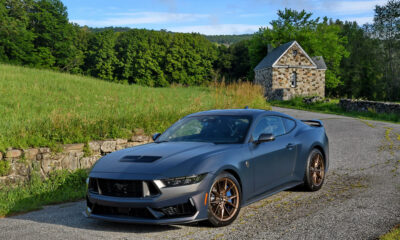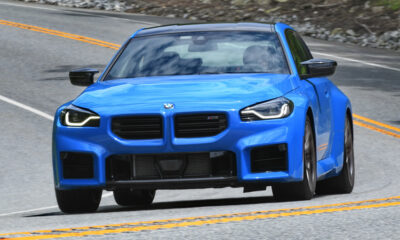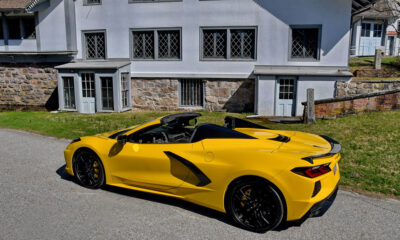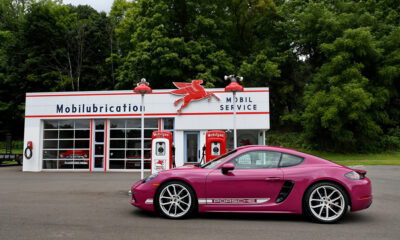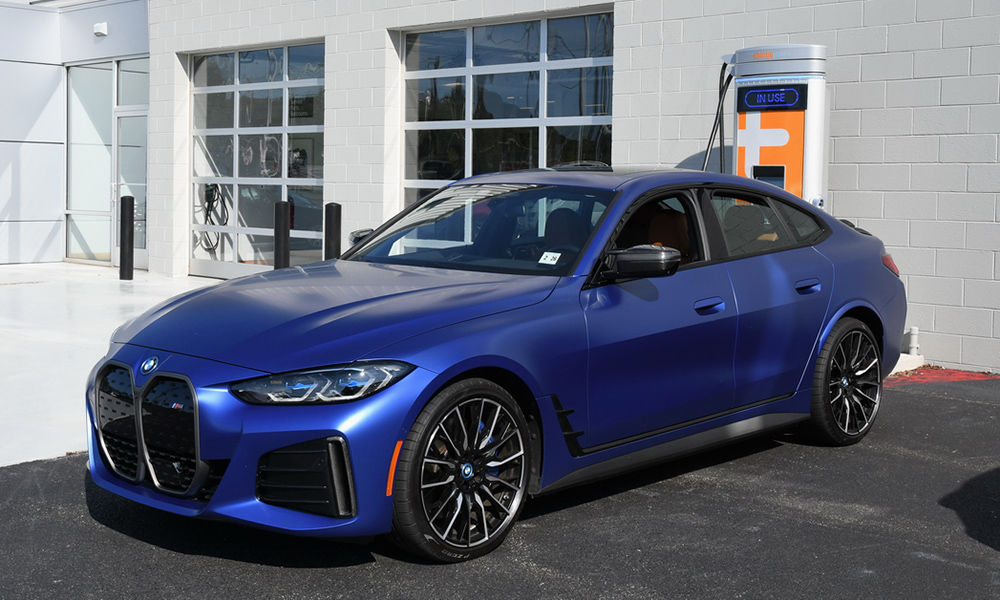
Photo: David Haueter
It’s clear that electric is going to play a significant role in the next chapter of automotive history. With the governmental and environmental mandates that we’ve already seen put in place and more likely to come, electric car development has serious momentum as car manufacturers devote more investment and R & D into it.
As performance car enthusiasts, we may be more cynical about EVs than your average consumer, but driving the BMW i4 M50 helps to erase some of doubts I’ve had that electric cars can be fun to drive.
The i4 M50 is one of several all-electric models that BMW offers, which includes the i4 lineup as well as iX SUV models and i7 luxury sedans. The i4 models share the “Gran Coupe” body design with the 4 Series internal combustion engine-powered models, which are all essentially four-door sedans with a more rakish coupe-like body and a hatch to access the rear cargo area.
The i4 lineup ranges from the 282hp eDrive35 ($52,000) to the 335hp eDrive40i ($57,100) and the 536hp i4 M50 ($68,700).
While the eDrive35 and eDrive40 models make do with a single electric motor driving only the rear wheels, the i4 M50 has a pair of motors, with one driving the front wheels and one driving the back, which makes it all-wheel drive. Together, the pair of motors produce 536 horsepower and 586 lb.-ft. of torque, which is significantly more than the 503 hp and 479 lb.-ft. produced by the ICE-powered M3 Competition.
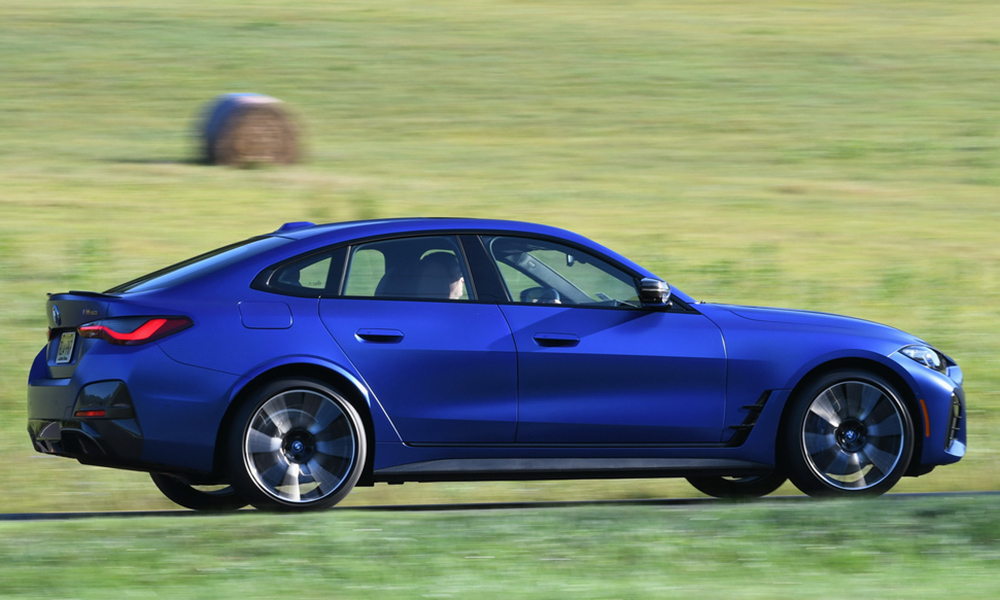
Photo: David Haueter
The i4 M50 is nearly as fast as the all-wheel drive M3 Competition xDrive, even though it weighs a lot more, with a curb weight of 5,018 pounds. versus the 3,890 lb. weight of the M3. It knocks off 0-60 mph in 3.7 seconds, just three-tenths behind the M3’s 3.4 second time.
The i4 M40 actually has a more evenly balanced weight distribution than the M3, at 48.7 percent front and 51.3 percent rear, versus the M3’s 53.1 percent front and 46.9 percent rear. Though it’s not a full-on M car, the i4 M50 has some M features including an adaptive M suspension with electronic dampers and M Sport brakes.
One of the main benefits of an EV from a performance standpoint is that you get all the torque immediately as soon as you hit the go pedal, and the acceleration of the i4 M50 is staggering and impressive. I’ve never been catapulted off an aircraft carrier in a fighter jet, but I’ll bet it kind of feels something like putting the i4 M50’s throttle pedal to the floor.
The acceleration is so immediate and powerful that you really need to warn passengers before you bury the throttle so they can brace themselves.
Braking in the i4 M50 is also quite different than in any ICE-powered BMW, with the regenerative braking system that uses braking friction to charge the electric motors.
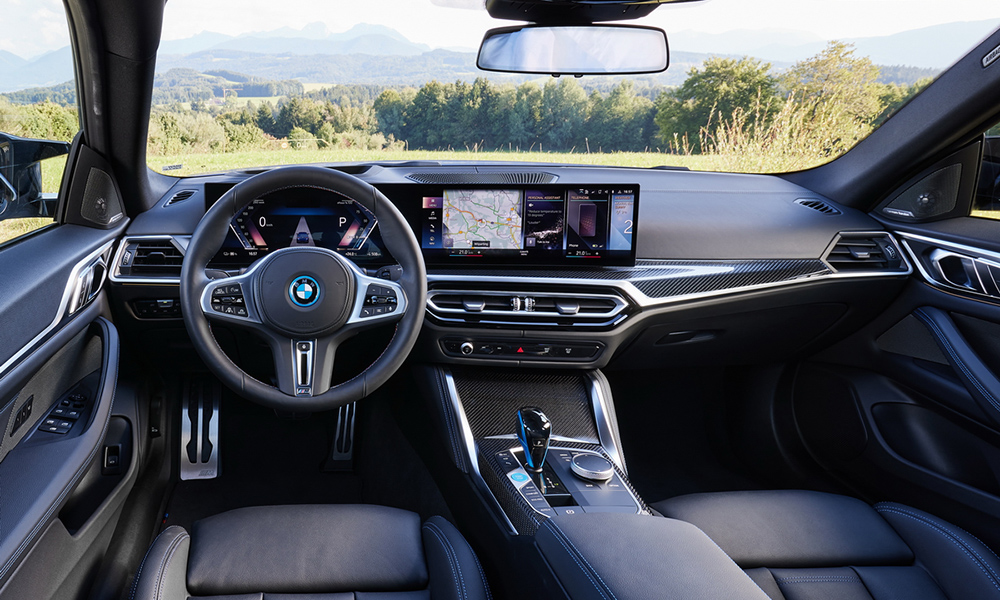
Photo: BMW
With the car in its normal drive mode, you feel the braking effect of that system, but you can still coast easily, which also helps to charge the battery. Once you put the transmission lever into “B” mode (in the spot that would usually be a Sport transmission mode) the braking effect becomes much more pronounced and feels as if you’re riding the brakes a little or doing full-on braking, depending on how fast you lift your foot off the throttle.
Driving in the B mode presents new challenges to the driver, as the smoothness with your foot on the throttle makes the braking effect more or less pronounced, and you need to get used to the timing and smoothness on and off the throttle when coming to a full stop. Once you get accustomed to it, you can drive in this mode without hardly ever touching the brake pedal.
It also makes for some fun challenges when driving on a twisty road, as you can use the brake regeneration effect for your braking and just focus on modulating the throttle pedal.
Speaking of handling, the i4 M50 is surprisingly adept at handling twisty back roads despite its prodigious weight. It helps that the weight is lower down in the chassis with a low center of gravity, but BMW has done a pretty masterful job of tuning the suspension to make this car handle as you would expect from a BMW sports sedan, and it’s fun to drive on back roads.
It’s only when you push harder that you start to feel the weight more in the corners, but it’s predictable and easily managed with the throttle. The car is also comfortable and well-controlled over bumps and road imperfections, even with the lower profile tires that were on our test car.
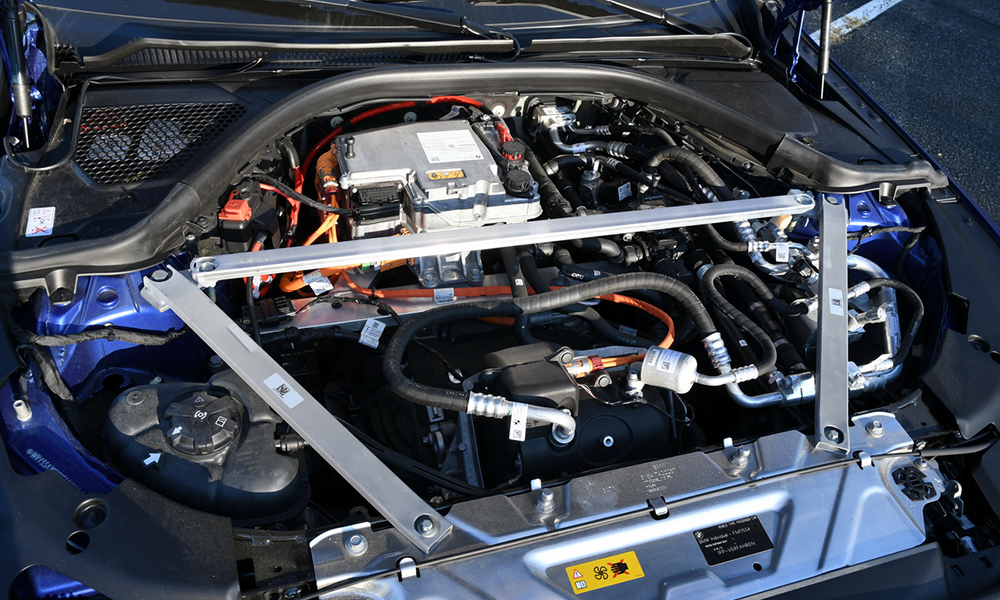
Photo: David Haueter
The range on the i4 M50 is 227-271 miles, which is dependent on the wheel/tire size. With the 19-inch wheels the range is 271 miles, but it drops to 227 with the 20-inch wheels since there’s more weight and more aerodynamic drag.
That’s not bad for a car this powerful, but you’ll need to plan ahead if you want to go on a trip. In comparison, the single-motor i4 eDrive40 has a range of 282-301 miles.
One key thing I learned from my limited amount of time driving EVs is that you must plan ahead on when and where you’re going to get a charge and have a backup plan as well, because sometimes you’ll get to a charging station and find that it’s out of service or has a car already using it.
Charging apps help to plan ahead and will even tell you if a station is available, but it’s clear that work is needed on the charging infrastructure if the government wants to get widespread adoption of electric cars.
If you are willing to accept the challenges of owning an EV and want sports sedan performance, the i4 M50 is certainly a good choice. It delivers performance that is the equivalent of the M3 in most driving situations and costs around $14,000 less, which can end up being even more when you factor in rebates that the government often has in place for buying EVs.
Overall, I was impressed with the i4 M50, though I wouldn’t personally be ready to forego an M3 to buy this car if I were in the market for a powerful sports sedan.
As good as the i4 M40 is, I miss the more visceral connection of a ICE-powered car, with the engine noise and gear changes.
Driving an electric car has its rewards, but it feels more clinical and lacks emotion compared to gas-powered rivals. That may be something we’ll just have to get used to.
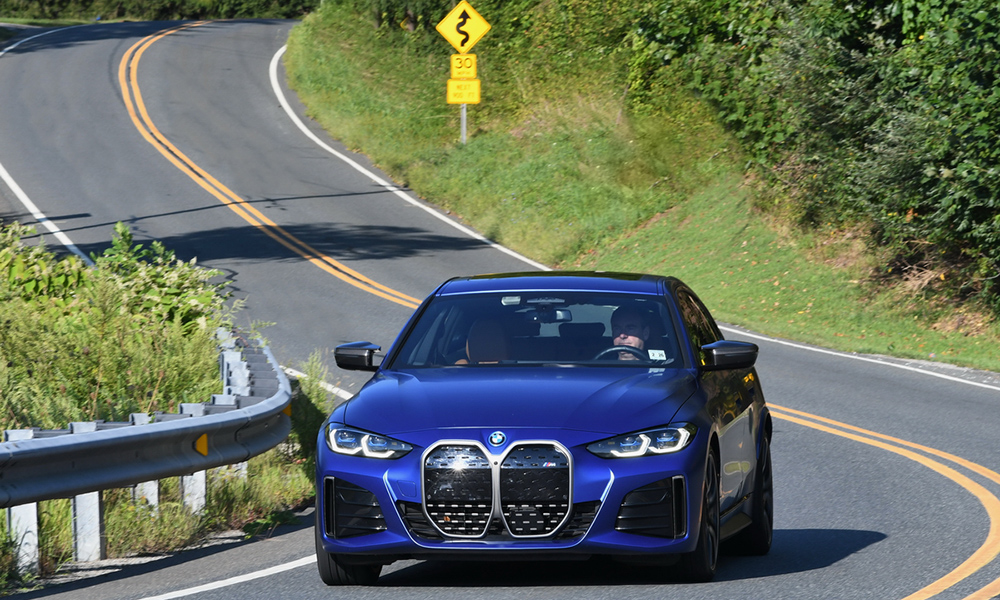
Photo: David Haueter

















